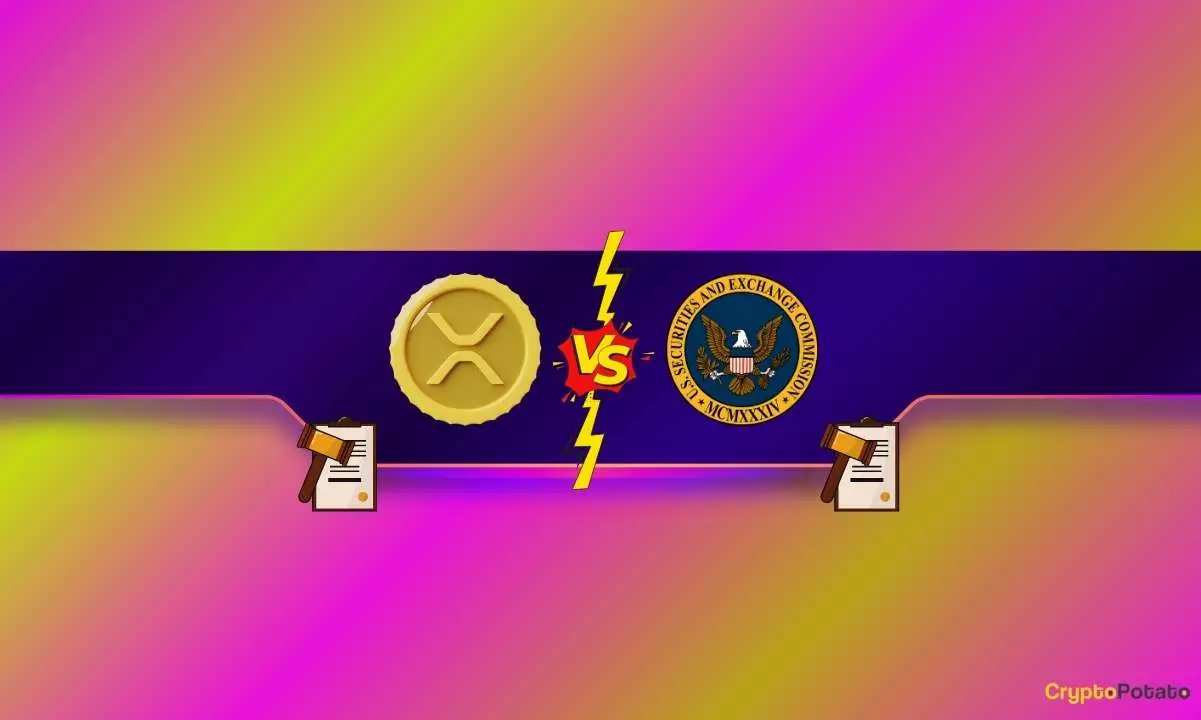The legal saga between Ripple Labs and the U.S. Securities and Exchange Commission (SEC) is a complex narrative that reflects broader tensions in the cryptocurrency regulatory landscape. Ripple’s struggles encapsulate the challenges that innovative financial technologies face in a heavily regulated environment. As the legal proceedings unfold, they not only have implications for Ripple’s business model but also impact the cryptocurrency market at large, especially the valuation of its native token, XRP.
In August, Judge Torres issued a pivotal ruling that established precedent regarding XRP’s status. By determining that secondary market sales of XRP to retail investors do not qualify as securities transactions, she provided some legal clarity that Ripple had long sought. However, this ruling was not without its caveats; Ripple was still penalized with a hefty fine of $125 million, significantly less than the $2 billion initially sought by the SEC. Interestingly, this fine appears to have been received positively by Ripple, suggesting that the company is focused more on the long-term implications of securing XRP’s status rather than the immediate financial hit.
This legal ruling challenges the SEC’s broader stance on token classification and the requirements for securities. Ripple’s Chief Legal Officer, Stuart Alderoty, indicated that the firm would be fighting to clarify any remaining uncertainties through a cross-appeal. This indicates a tactical approach from Ripple to ensure that all aspects of their case are thoroughly addressed, reflecting a desire for conclusive resolutions rather than ongoing litigation.
The fact that the SEC has decided to appeal a part of Torres’ ruling is indicative of the agency’s intent to maintain its regulatory authority. During this process, Alderoty expressed the firm’s perspective that the SEC has recognized a key distinction: XRP itself is not a security. The agency’s acknowledgment—that specific tokens may not inherently be classified as securities—could signify a shift in how regulators approach cryptocurrency, though it remains deeply intertwined with ongoing legal negotiations.
As the SEC prepares for its appeal, it must present its arguments clearly by an approaching deadline, which adds a layer of urgency to the proceedings. The procedural details surrounding the appeals process, as shared by X user Ashely PROSPER, exhibit the complexities and nuances of legal strategy at play. The requirement of a settlement conference illustrates a potential for mediation, though the willingness of both parties to engage in good faith is crucial for any productive outcome.
Adding another layer of intrigue to the situation is the timing of Ripple’s annual Swell event, which coincides with the SEC’s deadline to clarify its appeals. The conference, set to occur in Miami, Florida, has generated significant speculation regarding potential announcements that could shift XRP’s market dynamics. Ripple has historically used this platform to unveil strategic initiatives, and the current climate makes this year’s event particularly noteworthy.
There are rumors that Ripple could introduce its US-pegged stablecoin, RLUSD, or detail a more robust strategy in its ongoing tussle with the SEC. Such announcements could sway market perception and significantly influence XRP’s price trajectory, which as of now sits at approximately $0.54—a marked decline compared to other cryptocurrencies. The potential for substantial news during Swell could either reinvigorate investor interest or deepen the uncertainty that has characterized XRP’s trading patterns in recent weeks.
XRP’s struggle to align with broader cryptocurrency performance metrics is indicative of the market’s cautious stance amidst regulatory uncertainty. As Ripple and the SEC grapple with their respective legal positions, market participants are increasingly attuned to developments from both parties. Investors may weigh the implications of court rulings alongside potential new partnerships or products announced at Swell.
The implications of this legal battle extend beyond Ripple and XRP; they serve as a bellwether for cryptocurrency regulation in the United States. As technology continues to outpace regulatory frameworks, the outcomes of these high-stakes legal deliberations will likely inform how both the market and regulatory agencies approach cryptocurrencies moving forward. Only time will reveal the lasting impact of these developments on Ripple’s future and the broader digital asset landscape.

